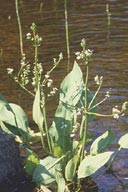 Loading... Please wait...
Loading... Please wait...- Home
- SEEDS
- SEED MIXES
- BUY PLANTS
- Info Request
-
Educational Videos
- Greenhouse Transplanting Demonstration
- Native Seed Cleaning demonstration at Ion Exchange Native Seed and Plant Nursery
- Attracting Butterflies
- Bidens - Bidens cernua Harvest Video
- Big Blue Stem Harvest
- Butterfly Milkweed Video
- Button Blazingstar - Liatris aspera Video
- Buttonbush - Cephalanthus occidentalis Video
- Canada Anemone - Anemone canadensis Harvest Video
- Cardinal Flower - Lobelia cardinalis Video
- Control Burn - Wildflower Field
- Cream Gentian - Gentiana flavida
- Culver's Root - Veronicastrum virginicum Video
- Cup Plant - Silphium perfoliatum Video
- Dormant Seeding | Planting
- Earthyman's Favorite Wildflowers Video
- Eco-Friendly Golf Course Seed Mix
- Floating Islands
- Fringed Loosestrife - Lysimachia ciliata Video
- Giant Yellow Hyssop - Agastache nepetoides Video
- Indiangrass - Sorghastrum nutans Video
- Iowa Prairie Partner Program
- Leadplant - Amorpha canescens (Potted) Video
- Meadow Blazingstar - Liatris ligulistylis
- Midland Shooting Stars - Dodecatheon meadii Video
- Native Plant Nursery Field Irrigation Experiment
- Nodding Onion - Allium cernuum Video
- Ohio spiderwort - Tradescantia ohiensis Video
- Old Man's Beard - Clematis virginiana blooms Video
- Oxeye Sunflower - Heliopsis helianthoides Video
- Prairie Spiderwort - Tradescantia bracteata
- Purple Coneflower - Echinacea purpurea Video
- Rain Garden or Water Garden Video
- Rattlesnake Master - Eryngium yuccifolium Video
- Riverbank Stabilization - Wetland Plants
- Rose Mallow - Hibiscus militaris Video
- Rosinweed - Silphium integrifolium Video
- Royal Catchfly - Silene regia
- Showy Tick Trefoil - Desmodium canadense Video
- Sneezeweed - Helenium autumnale Video
- Swamp Betony - Pedicularis lanceolata Video
- Swamp Milkweed - Asclepias incarnata Video
- Sweet Blackeyed Susan - Rudbeckia subtomentosa Video
- Tall Coreopsis - Coreopsis tripteris Video
- Urban Butterfly Garden
- Wild Bergamot - Monarda fistulosa Video
- Wild Geranium - Geranium maculatum Harvest
- Wild Goldenglow - Rudbeckia lanciniata Video
- Wild Petunia - Ruellia humilis Harvest Video
- Woodland Knotweed - Polygonum virginianum Video
- Yellow Coneflower - Ratibida pinnata Video
- Blog
- Resources
- Policies
Contact Us
Phone:
563-419-0837
or 563-535-7231
Email:
hbright@ionXchange.com
Browse Products
Add to Wish List
You Recently Viewed...
Our Newsletter
Product Description
Water Plantain (Alisma Plantago-Aquatica), also known as Mad Dog Weed, can be erect or drooping, perennial favoring the shallow water of wetlands, marshes, muddy banks and water-logged ditches. It is also occasionally found in wet fields. Prominent in Iowa marshes and found across the United States and Canada. Tiny white flowers appear from June through September. Can reach 3 feet in height, but is normally less than that. Loves the water and needs full sun.
From the ancient Greek Alisma (meaning water plantain) and the combination form of plantago-aquatica, meaning "water plantain".
| Sun Exposure | Savanna, Prairie |
| Soil Moisture | Wet, Wet Mesic |
| Bloom Time | Summer, Fall June, July, August, September |
| Bloom Color | White |
| Max. Height | 3 feet |
| Wetland Code | UPL |
| Germ Code | |
| Seeds Per Packet | |
| Seeds Per Ounce |
There are three or four different species of Plantago known worldwide as "Soldier's Herb", a widely used medicinal plant - our Water Plantain is not in that category.
Edible Uses:
Root: Cooked. Rich in starch. Caution is advised, the root is acrid if it is not dried or well cooked before use.
Leaves and petioles: Must be thoroughly cooked. They require long boiling and have a salty flavour. The leaves are antibacterial, anticholesterolemic, diaphoretic, diuretic, hypoglycaemic and hypotensive. They are used in the treatment of cystitis, dysentery, renal calculus, gravel etc. The fresh leaf is rubefacien. It is used in the treatment of leprosy and is also applied locally to bruises and swellings.
Dried stem bases eaten, or grated and taken with water in treating digestive disorders such as heartburn, cramps and stomach flu.
Medicinal Uses:
The powdered seed is an astringent, used in cases of bleeding. The seed is also said to promote sterility. The root has a wide range of medicinal uses. It is antibacterial, anticholesterolemic, diuretic and hypotensive. It is said to lower blood pressure, cholesterol and blood sugar level whilst it also has an antibacterial action on Staphylococcus, Pneumococci and Mycobacterium. The root is used in the treatment of oliguria, oedema, nephritis, acute diarrhoea, cholesterolaemia and fatty liver. It has been thought of as a cure for rabies, though this has not been substantiate. The whole plant is believed to promote conception. The root is harvested before the plant comes into flower and is dried for later use. A homeopathic remedy is obtained from the fresh root.
Other Uses:
None known
Warning: See above cautions.








